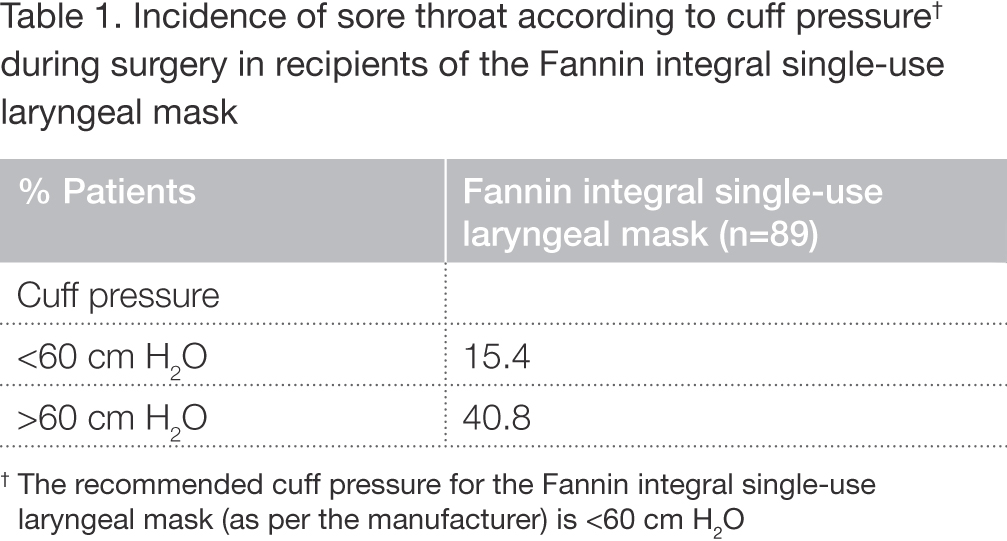The influence of laryngeal mask airway (LMA) cuff pressure on postoperative sore throat
Authors
Spiro M. et al.
Publication
Eur J Anaesthesiol 2010; 27 (47): 250 [Abstract 19AP3-1].
Summary
- A study to investigate whether over inflation of the cuff contributes to post-operative sore throat in recipients of the Fannin integral single-use laryngeal mask
- A greater cuff pressure during surgery was associated with an increase in the incidence of post-operative sore throat in recipients of the Fannin integral single-use laryngeal mask
- Anaesthetists had a lack of knowledge regarding the correct cuff pressure for the Fannin integral single-use laryngeal mask and did not routinely measure cuff pressure during surgery
Objectives:
- To investigate whether over inflation of the cuff contributes to post-operative sore throat in recipients of the Fannin integral single-use laryngeal mask
Method:
- This was a prospective study undertaken in patients aged ≥18 years undergoing a surgical procedure (other than ear, nose and throat surgery)
- The cuff pressure of the Fannin integral single-use laryngeal mask was measured during surgery
- Patients were questioned regarding their experience of sore throat in the post-operative period
- A questionnaire was used to determine anaesthetists’ knowledge of the recommended cuff pressure and whether cuff pressure was routinely monitored
Results:
- Overall, 89 patients were included in the study
- The median cuff pressure during surgery was 120 cm H2O
- A cuff pressure of <60 cm H2O was recorded in a minority (14.6%) of patients
- Patients with a cuff pressure of <60 cm H2O during surgery were less likely to experience a sore throat in the post-operative period than patients with a cuff pressure of >60 cm H2O (Table 1)
- None of the ten patients with a cuff pressure of <48 cm H2O experienced sore throat
- Sore throat occurred less often when the Fannin integral single-use laryngeal mask was inserted by a consultant than by a trainee (22.7% vs. 41.8%, respectively)
- The incidence of sore throat was not associated with the amount of time that the device was in situ
- None of the 33 anaesthetists questioned routinely measured cuff pressure and only one was aware of the maximum recommended cuff pressure for the Fannin integral single-use laryngeal mask
Conclusions:
- There was a positive correlation between cuff pressure during surgery and the incidence of post-operative sore throat in recipients of the Fannin integral single-use laryngeal mask
- Anaesthetists had a lack of knowledge regarding the correct cuff pressure for the Fannin integral single-use laryngeal mask, and did not routinely measure cuff pressure during surgery
